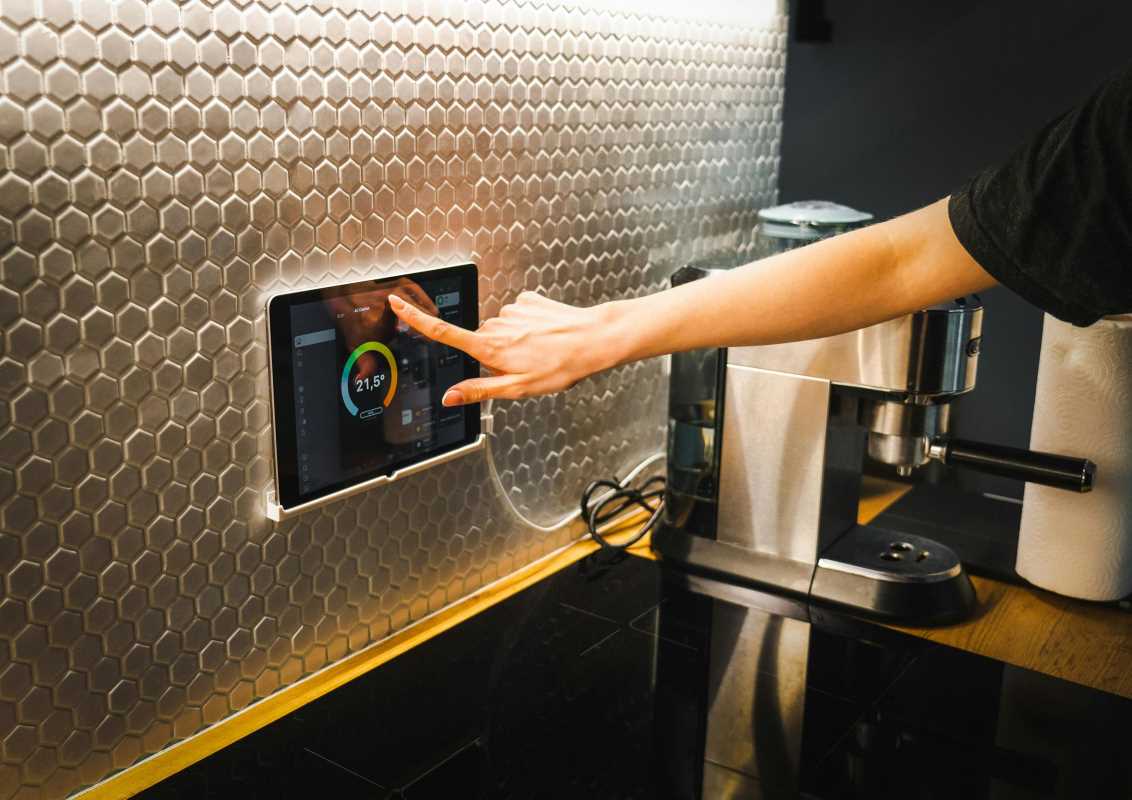As a gardener, you already appreciate the magic of turning a tiny seed into a delicious tomato or a beautiful flower. But what if you could bring some of that transformative power right into your kitchen? We're talking about countertop composting, a simple and effective way to reduce waste, create nutrient-rich food for your plants, and close the loop on your household's consumption. It’s a small step that makes a big impact on your garden and the planet.
What is Composting, Anyway? A Quick Refresher
At its core, composting is nature's recycling program. It's the process of breaking down organic materials—like your leftover veggie scraps, coffee grounds, and eggshells—into a rich, dark, soil-like substance called compost. Think of it as a concentrated dose of nutrients for your garden. When you mix compost into your soil, you're improving its structure, helping it retain moisture, and feeding the beneficial microorganisms that keep your plants healthy and thriving.
For many gardeners, the idea of composting brings to mind large, outdoor bins or sprawling piles. While those methods are fantastic, not everyone has the space or the desire for a big setup. This is where countertop compost systems come in. They offer a convenient, mess-free, and odor-free way to collect your kitchen scraps right where you generate them.
Closing the Loop: The Magic of Home Circularity
Before we dive into the different types of countertop systems, let's talk about a concept called "circularity." It sounds complex, but the idea is simple. In a traditional, "linear" system, we take resources, make something, use it, and then throw it away. Think of a plastic water bottle: it's made, you drink from it, and it ends up in a landfill.
A "circular" system, on the other hand, aims to eliminate waste. Instead of throwing things away, we find ways to reuse, recycle, or return them to the earth. Composting is a perfect example of home circularity. You grow vegetables in your garden, you eat them, and then you compost the scraps. That compost then goes back into your garden to help you grow more vegetables. See the circle?
By composting your kitchen scraps, you are:
- Reducing Landfill Waste: Food scraps make up a significant portion of household trash. When they're buried in a landfill, they decompose without oxygen, releasing methane—a potent greenhouse gas. Composting prevents this entirely.
- Creating "Black Gold" for Your Garden: You're making your own free, high-quality soil amendment. This stuff is packed with the nutrients your plants crave, reducing or even eliminating the need for chemical fertilizers.
- Improving Soil Health: Compost adds organic matter to your soil, which helps with everything from drainage in heavy clay soils to water retention in sandy soils. Healthy soil means healthier, more resilient plants.
Choosing Your Countertop Champion: Types of Compost Bins
A countertop compost collector is essentially a temporary holding bin for your kitchen scraps before they head to their final destination, whether that's your outdoor pile, a community garden, or a specialized indoor system. The main goal is to make collecting scraps easy and to control odors.
Here are the most common types of countertop collectors:
1. The Simple & Stylish Pail
This is the most basic and popular option. These are typically small bins or pails made from materials like stainless steel, ceramic, or bamboo. They're designed to look good on your counter while being highly functional.
- How it Works: You just lift the lid and toss in your scraps. Most models come with a charcoal or carbon filter in the lid that neutralizes odors before they can escape. You'll want to empty this type of bin every few days.
- Best For: Gardeners who already have an outdoor compost pile or bin and just need a convenient way to ferry scraps from the kitchen to the backyard.
- Pros: Affordable, easy to clean, and available in many styles to match your kitchen decor.
- Cons: It's just a collector. The actual composting happens elsewhere.
2. The Bokashi Bin
Bokashi is a Japanese method that's more about fermentation than traditional decomposition. It uses a special "Bokashi bran"—a mixture of bran, molasses, and effective microorganisms—to pickle your kitchen waste.
- How it Works: You layer your food scraps in the airtight Bokashi bin, sprinkling a bit of the bran on top of each layer. The microorganisms get to work immediately, fermenting the waste. A spigot at the bottom allows you to drain off a nutrient-rich "tea" every few days, which can be diluted and used as a potent liquid fertilizer for your plants. After a couple of weeks, the fermented solids can be buried in your garden or added to a traditional compost pile, where they will break down very quickly.
- Best For: Gardeners who want to compost everything—including meat, dairy, and oily foods, which are no-gos for traditional piles. It's also great for those in apartments who want to create a powerful soil amendment without a large outdoor setup.
- Pros: No bad smells (it has a sweet, pickled scent), composts a wider variety of food waste, and creates a liquid fertilizer.
- Cons: Requires the ongoing purchase of Bokashi bran. The final product isn't finished compost; it needs to be buried to complete the process.
3. The Electric Composter (Food Cycler)
For the tech-loving gardener, electric composters are a game-changer. These countertop appliances use heat, grinding, and aeration to dramatically speed up the decomposition process.
- How it Works: You put your scraps into the machine, close the lid, and push a button. Over several hours, the machine dries and grinds the waste, reducing its volume by up to 90%. What you're left with is a dry, sterile, dirt-like material that can be mixed directly into your garden soil.
- Best For: Anyone looking for the fastest, most convenient, and most odor-free solution. It's ideal for those who don't have outdoor space and want a finished product ready for the garden.
- Pros: Extremely fast (produces a soil amendment in hours), no odors, and can handle most food scraps, sometimes even small bones.
- Cons: The most expensive option upfront. It uses electricity to run. The end product is a sterile soil amendment, not biologically active compost (though it will become active once added to your soil).
What to Compost (and What to Avoid)
For standard countertop pails and outdoor piles, you'll want a good mix of "greens" and "browns."
- Greens (Nitrogen-rich): Fruit and vegetable scraps, coffee grounds, tea bags (staples removed), and fresh grass clippings.
- Browns (Carbon-rich): Dried leaves, cardboard, paper, eggshells, and sawdust from untreated wood.
Generally, you should AVOID:
- Meat, fish, and bones
- Dairy products
- Oily or greasy foods
- Pet waste
- Diseased plants
These items can attract pests, create terrible odors, and introduce harmful pathogens into your compost. However, as mentioned, Bokashi systems and some electric composters are designed to handle many of these "forbidden" items.
Practical Tips for Success
- Keep it Close: Place your countertop bin right next to your sink or cutting board. If it's convenient, you're more likely to use it.
- Empty Regularly: Aim to empty your simple pail every 2-3 days to prevent odors and fruit flies, especially in warmer months.
- Lining is Optional: You can use compostable bags to line your pail for easier cleaning, but it's not necessary. A quick rinse after emptying is usually all it takes.
- Chop it Up: Smaller pieces break down faster, no matter which system you use. Chopping up a banana peel or a large chunk of melon rind will speed things along.
- Use That Bokashi Tea! Don't forget to drain the liquid from your Bokashi bin. Dilute it 1:100 with water (about 2 teaspoons per gallon of water) and use it to water your houseplants or garden beds for a fantastic nutrient boost.
Starting with a countertop compost system is one of the easiest and most rewarding steps you can take toward a more sustainable lifestyle and a more productive garden. You're not just getting rid of trash; you're creating a valuable resource that will bring life back to your soil, season after season.
 (Image via
(Image via





